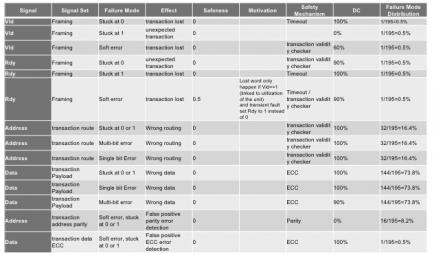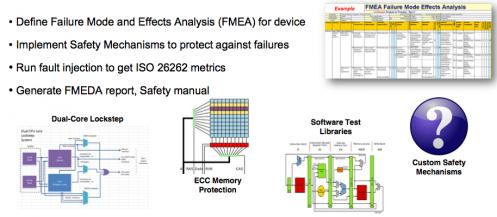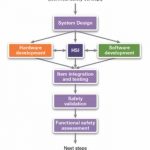You are currently viewing SemiWiki as a guest which gives you limited access to the site. To view blog comments and experience other SemiWiki features you must be a registered member. Registration is fast, simple, and absolutely free so please,
join our community today!
Scalability – A Looming Problem in Safety Analysis
The boundless possibilities of automation in cars and other vehicles have captivated designers to the point that electronic content is now a stronger driver of differentiation than any other factor. It accounts for a substantial fraction of material cost in any of these vehicles.… Read More
Verifying a design for functional safety requirements for an IP or SoC per ISO 26262 is a complex process that can’t be encapsulated in one tool. Process complexities depend on whether the Tier1 or OEM is targeting safety-levels ASIL-A , B, C or D, where ASIL-D applies to anything truly safety-critical such as airbag controls or … Read More
In the course of building my understanding of functional safety, particularly with respect to ISO 26262, I have developed a better understanding of the design methods used to mitigate safety problems and the various tools and techniques that are applied to measure the impact of those diagnostics against ASIL goals. One area in… Read More
Safety is a big deal these days, not only in automotive applications, but also in critical infrastructure and industrial applications (the power grid, nuclear reactors and spacecraft, to name just a few compelling examples). We generally understand that functional blocks like CPUs and GPUs have to be safe, but what about the … Read More
While at DVCon I talked to Apurva Kalia (VP R&D in the System and Verification group at Cadence). He introduced me to the ultimate benchmark test for self-driving – an autonomous 3-wheeler driving in Delhi traffic. If you’ve never visited India, the traffic there is quite an experience. Vehicles of every type pack the roads … Read More
ISO 26262 is serious stuff, the governing process behind automotive safety. But, as I have observed before, it doesn’t make for light reading. The standard is all about process and V-diagrams, mountains of documentation and accredited experts. I wouldn’t trade a word of it (or my safety) for a more satisfying read, but all that … Read More
We’re putting the finishing touches on Chapter 9 of our upcoming book on ARM processors in mobile, this chapter looking at the evolution of Qualcomm. One of the things that made Qualcomm go was their innovative use of digital simulation. First, simulation proved out the Viterbi decoder (which Viterbi wasn’t convinced had a lot … Read More
Aerospace and defense applications have traditionally leveraged hardware-in-the-loop (HIL) testing to overcome several issues. A big one is how expensive the physical system is. Even breaking down the system into subsystems for test can still be too expensive when fielding more than a couple test stations. Modeling elements… Read More









